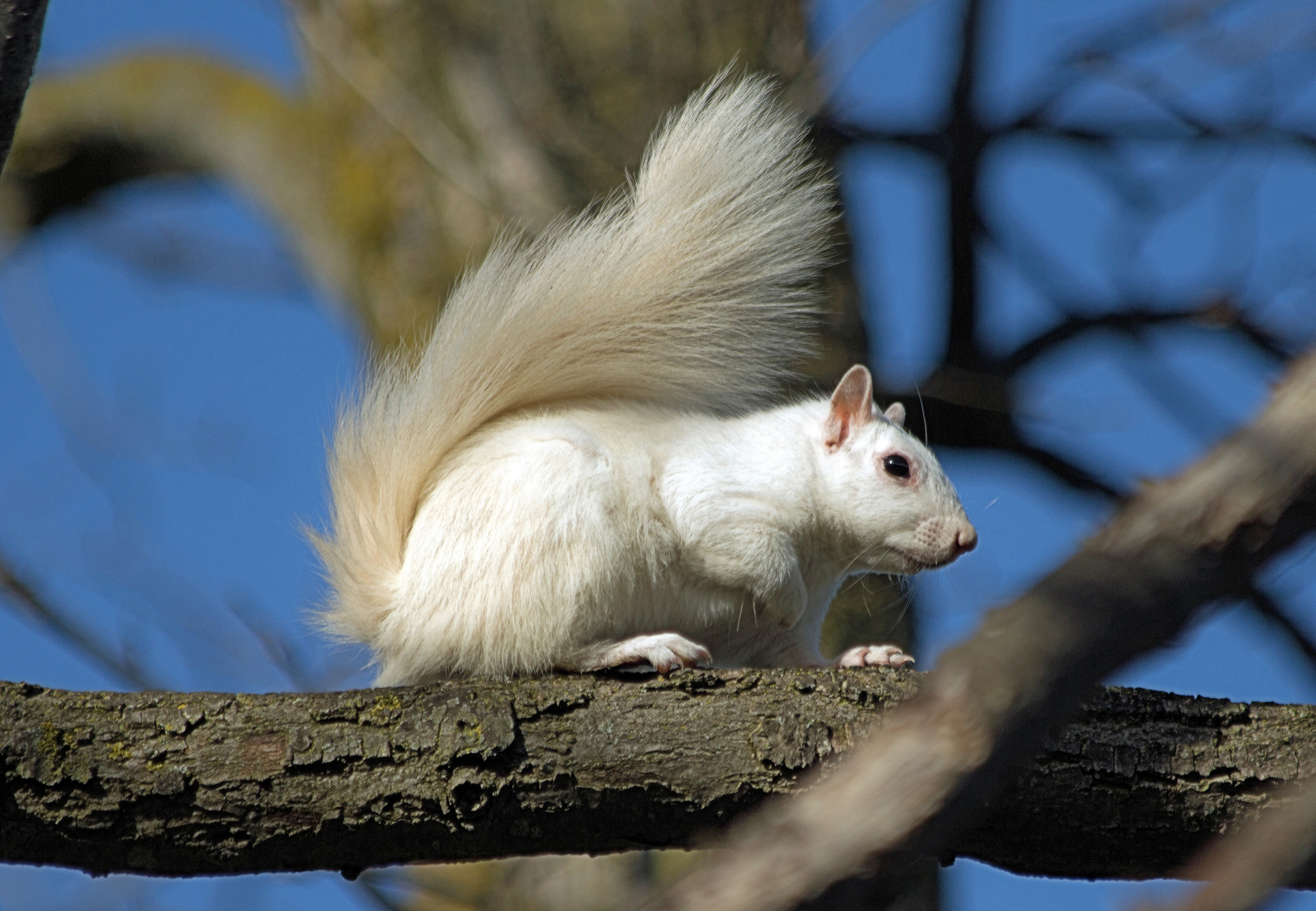

While uncommon, many wildlife species have color phases. If you’re lucky, you’ll see some leucistic squirrels and other animals in your garden. PEEK-A-BOO This may look like an albino squirrel, but its really a white phase gray squirrel. To protect them, the town bans free-roaming dogs and cats. The town now takes pride in the local population of albino eastern gray squirrels and even has a yearly count. Eventually, Illinois banned confining wildlife, so they released the squirrels. More than 100 years ago, a resident found two albino squirrel pups and gave them to his sons to raise. The city has a protected population that numbers in the hundreds most years. If you would like to find albino squirrels in the wild, travel to Olney, Illinois. The eyes of leucistic squirrels look like those with normal coloring.Īlbino animals are particularly rare in the wild because they really stand out to predators. Additionally, though the legend is still a legend in that its. Also, the legend described above can be categorized as a local legend, for it is situated in one spot the University of Texas at Austin’s campus. The eyes are the best way to determine if you have a leucistic or albino squirrel. For one, the albino squirrel itself is a legendary creature that serves as an omen of good fortune and engages with themes of luck. This results in a snowy, pure white animal with reddish eyes. While leucism causes a reduction in all pigment types, albinism completely lack one pigment, called melanin. Albinism is a different genetic mutation. Many people mistakenly assume a leucistic squirrel is an albino. Is There Such a Thing as an Albino Squirrel?

have larger populations of white squirrels: the Florida Keys Charlotte, North Carolina Kenton, Tennessee and Marionville, Missouri, to name a few. You may see one squirrel that is a dirty white all over and another that has patches of brown and white.Ĭertain areas of the eastern U.S. Leucism causes varying reductions in pigment. You can identify a leucistic squirrel by its white fur, of course, but it won’t necessarily be pure white all over. With their more typical coloring, it’s easy to identify the yellowish belly of the fox and the white belly of the gray squirrel. Whether you’re seeing white fox squirrels or white gray squirrels may be hard to tell. You can see leucism in many types of wild animals, including squirrels. Leucism is a genetic trait in which a recessive allele results in a reduction of pigment. The explanation for most cases of white fur is leucism in squirrels. The light coloring makes these squirrels more vulnerable to predators, which is why they are rare. If you’ve ever noticed both gray and white squirrels in your neighborhood or a local park, you have witnessed an interesting natural phenomenon.


 0 kommentar(er)
0 kommentar(er)
